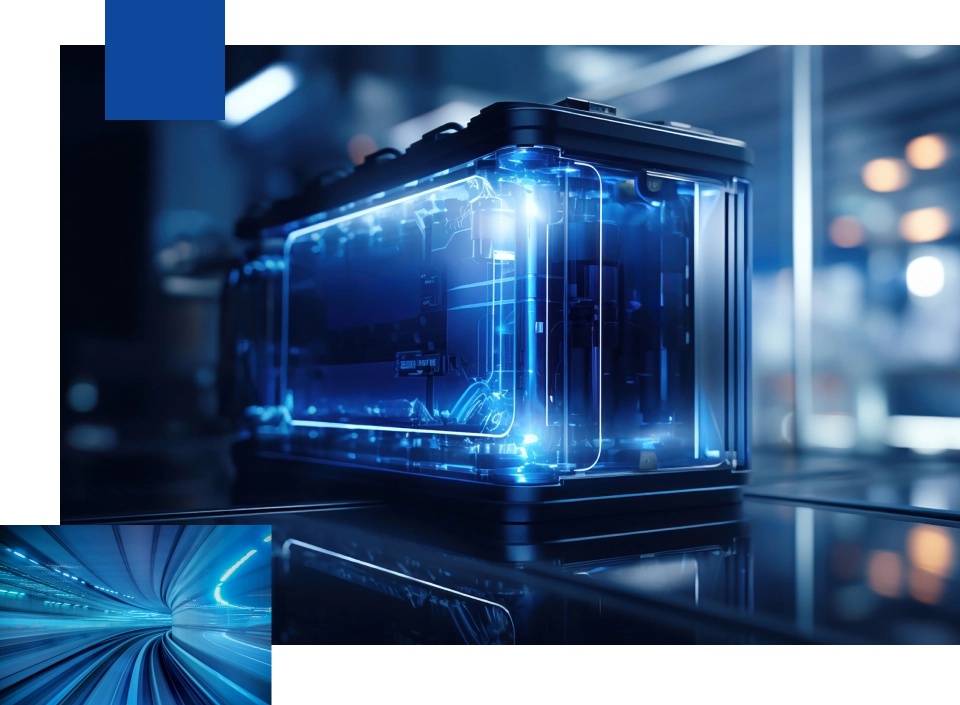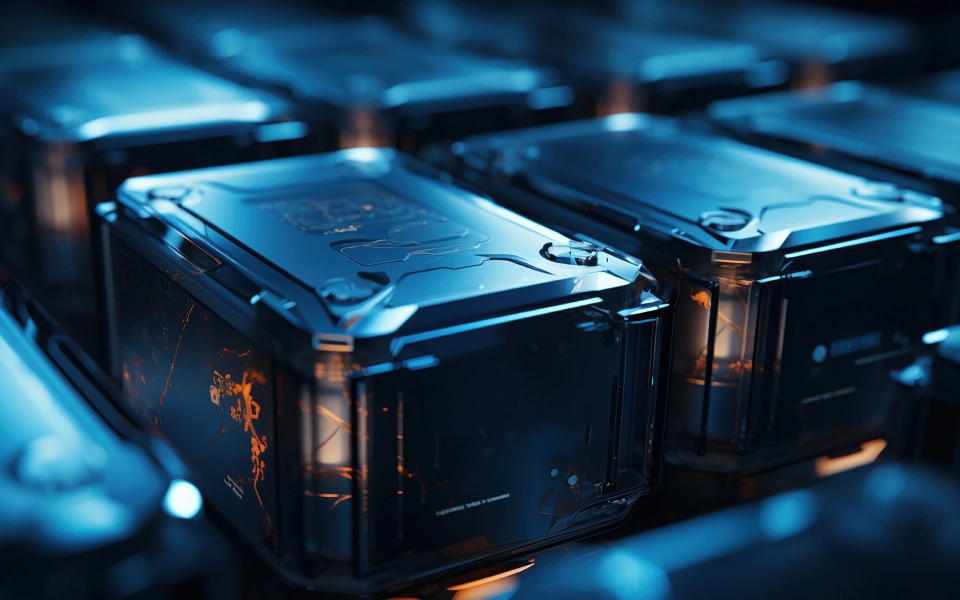
ALL SOLID STATE BATTERY (전고체 배터리)
Overview
An all-solid-state battery refers to a battery where all components, including the electrolyte, are solid. Like lithium-ion batteries, which are a type of rechargeable battery, all-solid-state batteries consist of two metal electrodes (cathode and anode) and an electrolyte that fills the space between them. While traditional rechargeable batteries use a liquid electrolyte, all-solid-state batteries use a solid electrolyte.
Solid electrolytes are expected to enable higher capacity and higher output batteries compared to lithium-ion batteries. Using a solid electrolyte offers safety advantages over lithium-ion batteries, making all-solid-state batteries attractive for electric vehicles and other applications. Various companies are currently competing to develop and mass-produce these batteries due to their numerous potential advantages.
Working Mechanism
All-solid-state batteries operate on a mechanism similar to lithium-ion batteries, where ions moving through the electrolyte between the cathode and anode generate an electric current. The key difference lies in the use of a solid electrolyte. Research on all-solid-state batteries focuses on developing suitable solid materials.

Components of All Solid State Batteries
The components of all-solid-state batteries include a metal lithium anode and an oxide or sulfide cathode. The solid electrolyte serves as an ideal separator, allowing only lithium ions to pass through. This design potentially resolves many issues associated with current liquid electrolyte lithium-ion batteries, such as flammability, limited voltage range, unstable solid-electrolyte interfaces, poor cycling performance, and mechanical strength.
Features of All Solid State Batteries
1. Safety: Solid electrolytes are non-flammable, reducing the risk of fire compared to liquid electrolytes.
2. Higher Energy Density: Fewer safety systems are needed, allowing for increased energy density at the module or cell pack level.
3. Stability: The solid structure offers enhanced stability and maintains its shape even if the electrolyte is damaged.
4. Efficiency: Solid-state batteries can achieve up to 20-30% of the energy density of batteries using liquid electrolytes. They offer high weight and volume energy density, long life, excellent flexibility, and low weight, making them suitable for a variety of applications.
2. Higher Energy Density: Fewer safety systems are needed, allowing for increased energy density at the module or cell pack level.
3. Stability: The solid structure offers enhanced stability and maintains its shape even if the electrolyte is damaged.
4. Efficiency: Solid-state batteries can achieve up to 20-30% of the energy density of batteries using liquid electrolytes. They offer high weight and volume energy density, long life, excellent flexibility, and low weight, making them suitable for a variety of applications.

Applications of All Solid State Batteries
Electric Vehicles (EVs)
Hybrid and plug-in electric vehicles currently use various battery technologies, including lithium-ion (Li-ion), nickel-metal hydride (NiMH), lead-acid, and electric double-layer capacitors (Ultra Capacitors). Li-ion batteries dominate the market due to their superior energy density. However, they still lag behind fossil fuels (gasoline and diesel) in energy and refueling efficiency, as EVs take much longer to recharge compared to refueling a gas tank.
Wearables
The high energy density and performance in harsh environments make all-solid-state batteries promising for realizing smaller, more reliable new wearable devices.
Space Equipment
In March 2021, Hitachi Zosen Corporation announced a solid-state battery with one of the industry's highest capacities and a broad operating temperature range, making it potentially suitable for harsh environments like space. In February 2022, a test mission began, and by August, the Japan Aerospace Exploration Agency (JAXA) announced that the solid-state battery operated correctly in space, powering camera equipment in the Japanese Experiment Module Kibo on the International Space Station (ISS).
Industrial Machinery
With long life and excellent heat resistance, all-solid-state batteries are expected to be used in harsh environments.

